Redesdale’s Barn and Tawny Owls – Northumbria Ringing Group
Other pages you may like :
- "Love Local" Summer Holiday Programme - North Tyne Youth
- Battle of Otterburn short film - The Time Bandits
- Border Bloodshed - Dr Neil Murphy, Northumbria University
- Conservation of Native Honey Bees
- Corsenside Walks Leaflet - Redesdale Ramblers
- Heads and Tales - St. Cuthbert's, Elsdon
- Hidden Redesdale - Wild Intrigue
- Reinstating Elsdon Village Green's Circular Tree Seat - Elsdon Parish Council
- St Cuthbert's Steps - St Cuthbert's, Bellingham
- St. Cuthbert's Three-Church Trail Booklet & Leaflet
- The Gun Inn Community Garden
Northumbria Ringing Group used their £1,000 Community Heritage Fund award to help conserve and promote Redesdale’s bird populations.
People took part in making nest boxes to distribute throughout Redesdale. The focus is Barn and Tawny Owls, but the project will also help Swifts, Tits and Flycatchers, and once installed the Northumbria Ringing Group will continue to monitor the nest boxes success. “Owls are a part of our wildlife heritage and particularly appeal to children. Nest boxes create a secure nest site, so will increase breeding opportunities and the public events will boost interest in bird conservation.” – Bryan Galloway, Northumbria Ringing Group
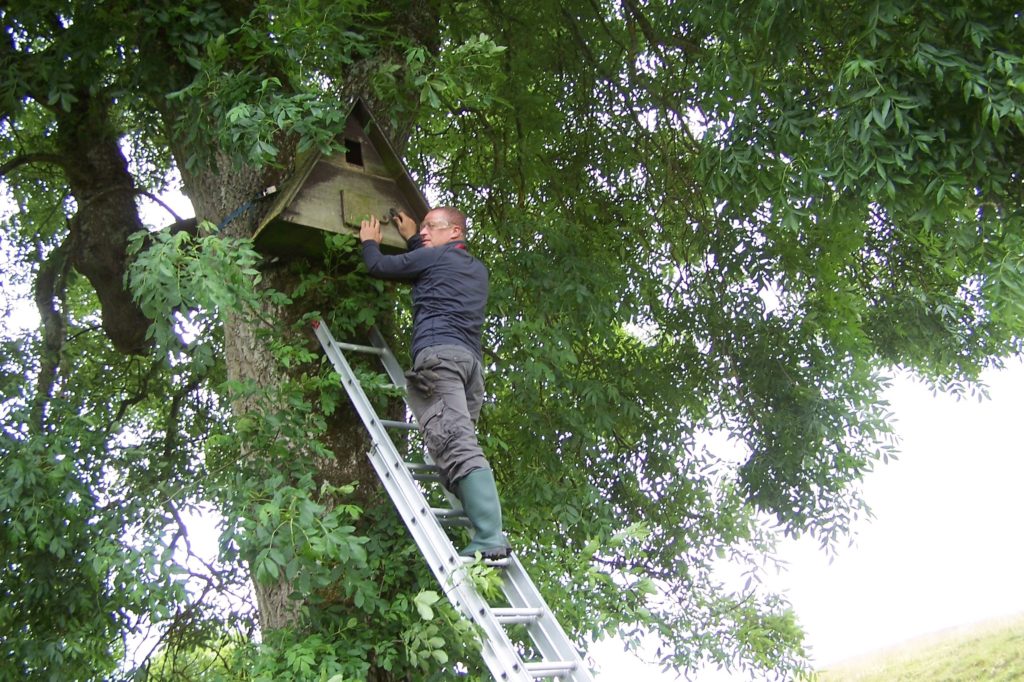
Find out more about the Northumbria Ringing Group’s project below.
Barn Owls
Northumbria Ringing Group members started a project with the Ministry of Defence and Northumberland National Park Authority in 2003, to produce and install nest boxes for Barn Owls in various locations in Redesdale. With the cooperation of landowners and tenants they were sited either in trees but more preferably inside buildings.
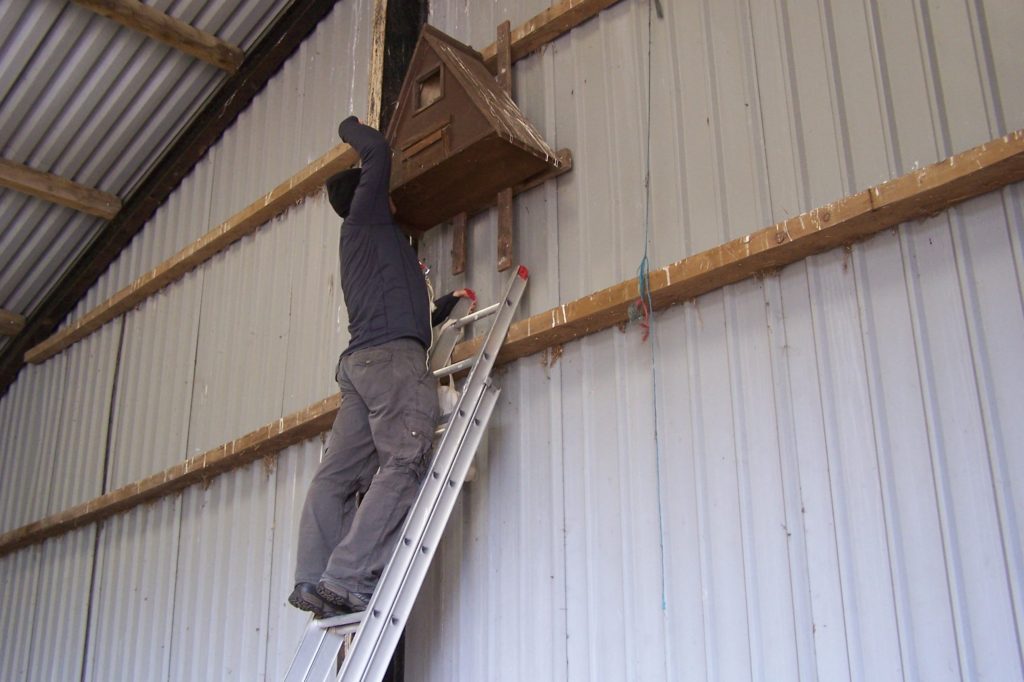
By 2008, 26 boxes had been located and by 2019 23 boxes attracted breeding pairs of Barn Owls. Members of the Northumbria Ringing Group, who have the appropriate Schedule One licence issued by Natural England, visit all of the nests to monitor productivity (the number of young fledgling per pair) and to ring the nestlings using rings issued by the British Trust for Ornithology. Since 2003 over 400 nestling Barn Owls have been ringed and some birds have moved up to 80kms from where they fledged and have been found up to 8 years after ringing.
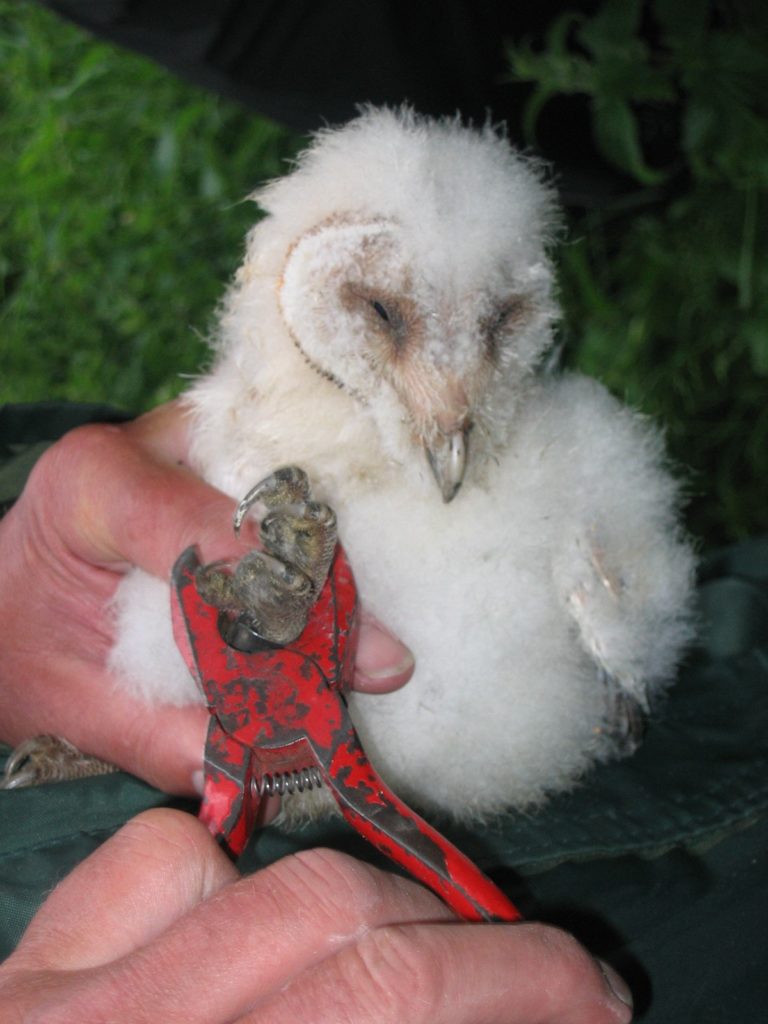
Barn Owls have a tough time in very cold winters. Many did not survive the successive winters of 2008 – 2011 – a disaster for the region’s population. Prolonged snow cover prevented them from finding food, which in Redesdale is largely field voles (confirmed by analysis of regurgitated pellets at nest sites), so many owls died. Over 60 ringed birds were found dead or dying through starvation with a high proportion being found by farmers in farm buildings. However, it was not all bad news because some of the lucky or more experienced birds that survived those winters have gone on to produce more offspring, including two broods in some years (this occurs when there is an abundance of voles in the late summer).
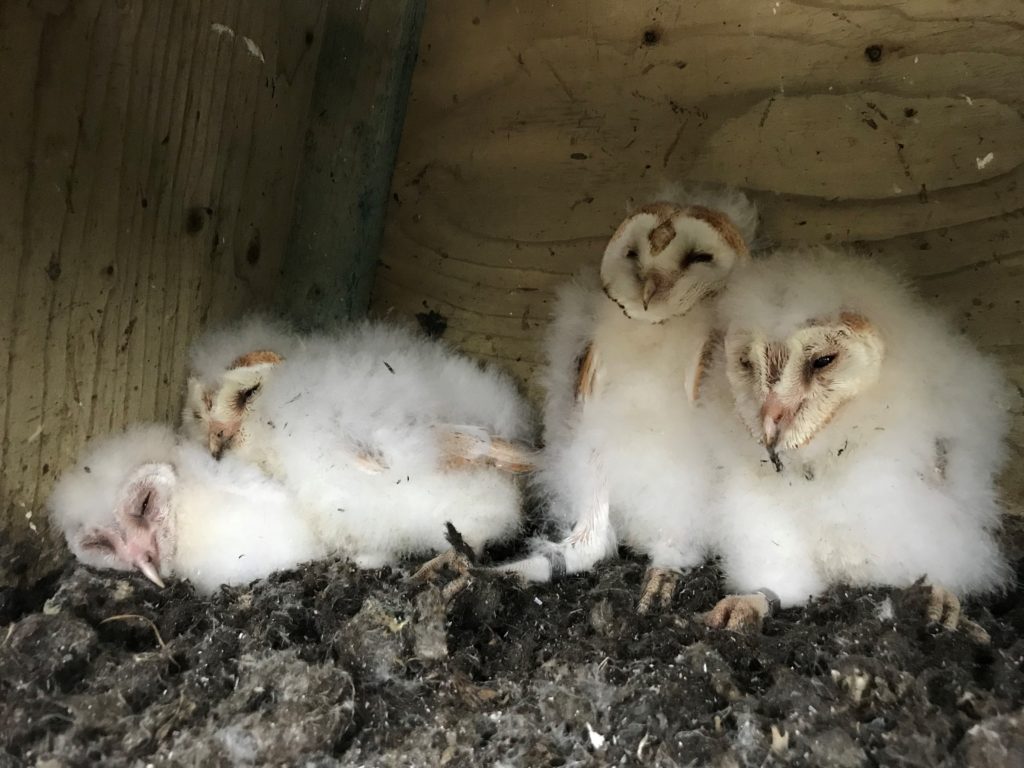
During the last two breeding seasons the Northumbria Ringing Group have assessed nest box condition and availability throughout Redesdale and have concluded that there is a need to replace some weathered boxes and provide more at new sites. The Revitalising Redesdale Community Heritage Fund agreed to fund the production of 10 boxes over the 2019/2020 winter.
Tawny Owls
Tawny Owls are sometimes referred to as “Wood Owls”. They most often nest in holes in trees or in nest boxes sited in suitable woodland. They mainly prey on wood mice and voles. There are many suitable woods in Redesdale but not enough natural holes. The Tawny Owl is a species of Conservation Concern and the British Trust for Ornithology asked volunteers to help record calling birds during spring 2019.
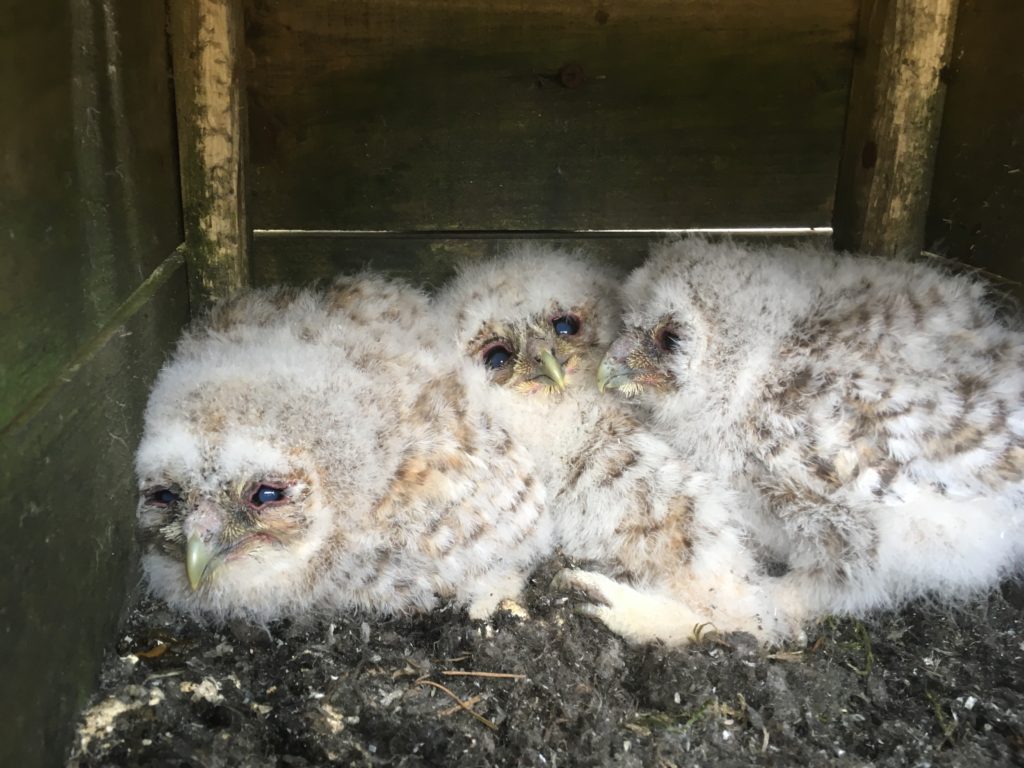
Northumbria Ringing Group responded with a pilot study in early spring 2019 installing 6 nest boxes in suitable woodland in Redesdale. Much to their surprise breeding Tawny Owls immediately moved in to 4 boxes and all were successful in fledging young. Nest boxes are relatively secure helping the owls produce more young. Some individuals are even known to live for up to 20 years, so can potentially raise 40 – 50 young during a lifetime.
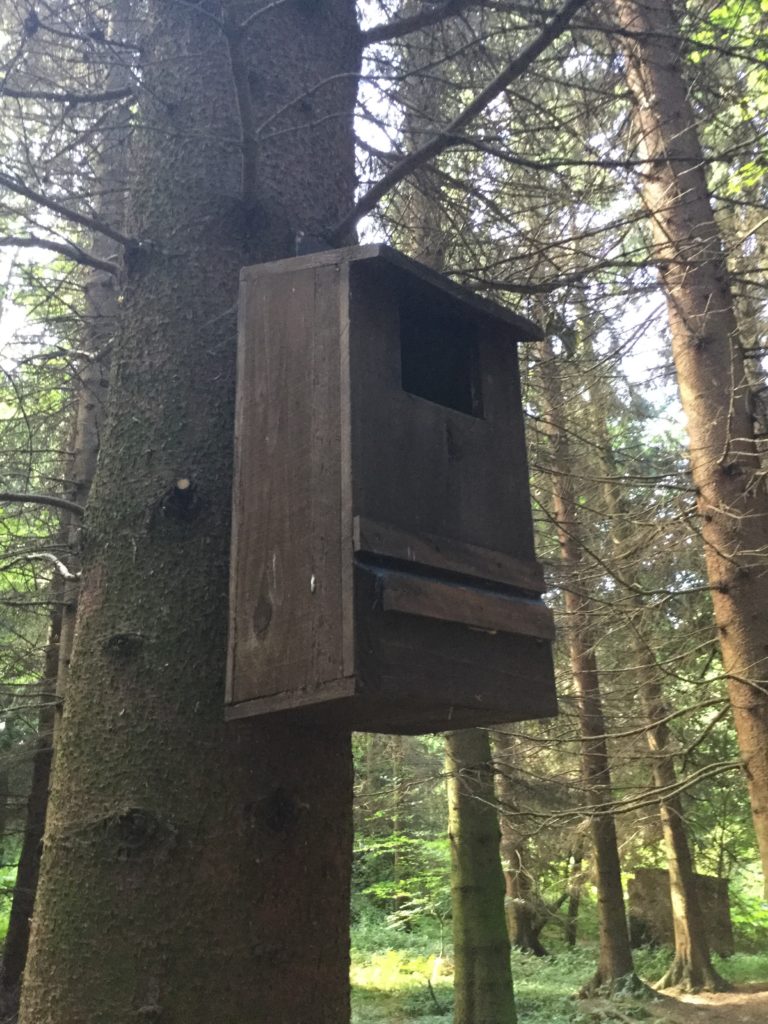
With so few suitable natural sites there was clearly a need to produce more nest boxes to help establish a viable population throughout Redesdale, which would link with the already long established, healthy population in the nearby Border Forests. The Revitalising Redesdale Community Heritage Fund provided funding for 15 boxes built to a high quality specification by a local joiner. The Group started siting the boxes in Redesdale in early November 2019. The Community Heritage Fund also supported the construction of nest boxes for other species of National Conservation Concern (e.g. Swifts and Flycatchers) for siting in early spring.
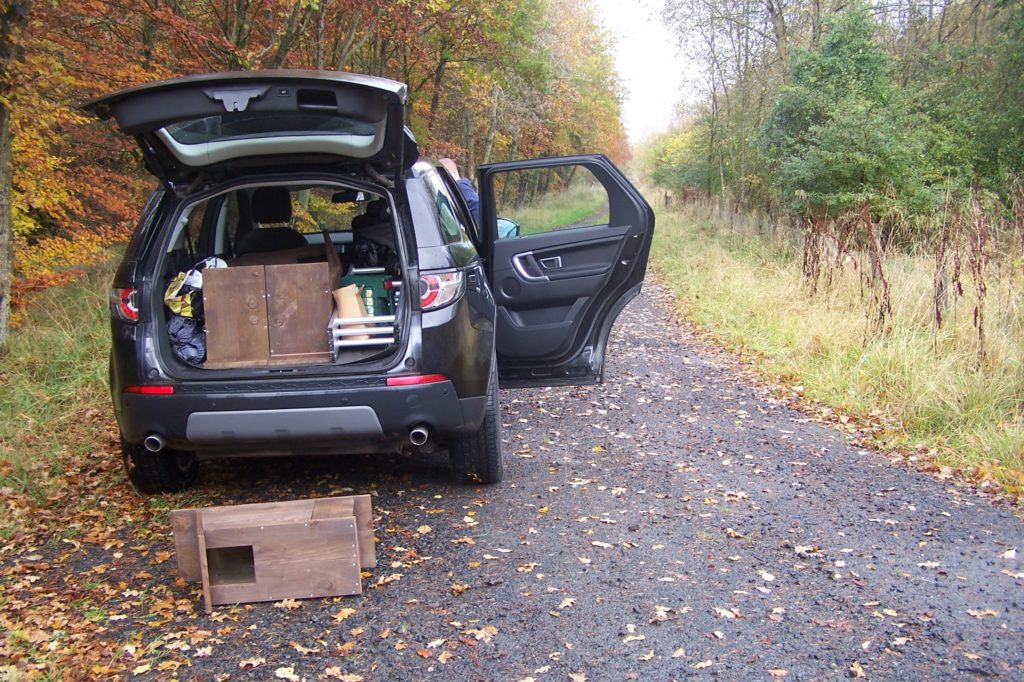
Northumbria Ringing Group members started monitoring in early 2020 and landowners and tenants were invited to attend nest visits together with interested parties where appropriate and covid restrictions allowed. The end of project results were presented at a talk in Elsdon Village hall in November 2022 to an audience of over 30 people.
December 2022 Update
10 Barn Owl boxes were produced through the project but because of Covid restrictions we only managed to site 4 of them in suitable buildings. Two were occupied in 2022 producing a total of 6 young. The last 6 boxes will be put up in 2023.
All 15 Tawny Owl boxes were produced and were located in suitable woodland between November 2019 and December 2021. By the end of 2022 11 had been used by breeding pairs producing in excess of 20 young. We believe that most were occupied by dispersing juveniles looking for new territories from the Forestry England nest boxes in nearby Redesdale Forest and we hope to confirm this over the coming years.
Small nest boxes were located in Rupert’s Wood and they successfully attracted breeding Great and Blue Tits. It is hoped that a few pairs of the rarer Pied Flycatchers and Redstarts will use them in years to come.
Four Swift boxes were produced and we hope to install them on buildings in the Elsdon and Rochester areas in 2023.
There is no doubt that the funding from the RR project enabled us to produce a significant number of new ‘homes’ that were well received and occupied by a range of species especially the Tawny Owl, a species of national conservation concern, and we have no doubt that they will continue to use them well into the future as the population grows.
Based on an article by: Bryan and Paul Galloway, Northumbria Ringing Group members